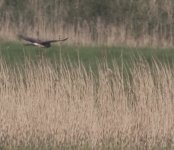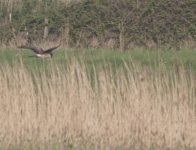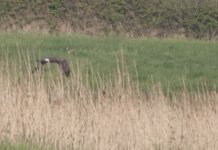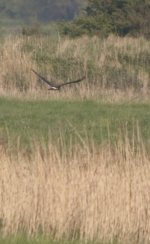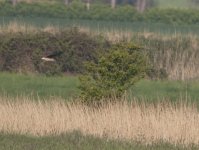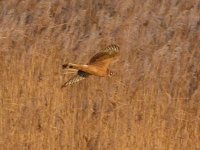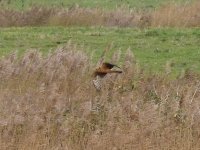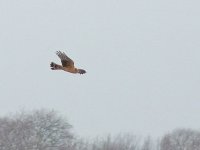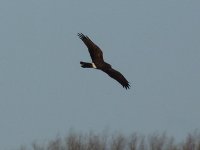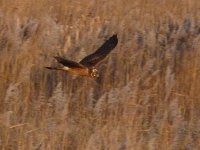Hi all
I should point out that any ringtail harrier is unusual in Suffolk in May and indeed Montagu's is more likely as a passage bird in May, while Pallid has never been recorded.
There had been a female Hen Harrier recorded at the start of May at this location, but it hadn't been seen for over a week and was much larger than this bird.
The strange thing about this bird is that perceived characters from brief close observations seemed to contradict what can be seen in the photos. In flight it seemed quite slender and had a rapid and quite buoyant flight.
The other things that stood out on first sight were the dark secondaries contrasting with the primaries, the very pale unstreaked straw coloured underparts, apart from some rufous streaking on axillaries and and some of the flanks. The amount of white around the eye was rather extensive above and below and there appeared to be a quite obvious boa, as seen in the last photo.
However, on reviewing the images it appeared to be quite broad-winged and to have an obvious white rump, both not obvious during observation.
Having read a lot on 2nd cal harriers and seen a lot of images, a broad white rump doesn't necessarily mean Hen Harrier. Moreover, all 3 harriers can appear quite broad-winged in some images more so Hen and Pallid, but Hen always has shorter wings, due to short primaries.
During field observation I was struck by the fact it didn't appear to have 5 fingers but rather 4, as can be seen in Pic 1 on left wing. I am also not sure 5 fingers are to be seen in pic 3, as grass obscures the bird. However, it is possible that a primary was missing on the left wing or I simply miscounted the primaries as the close view of all primaries I had was rather brief when it chased greenfinches just 30 m away.
It certainly appears quite blunt-winged in pic 3, and did to some extent when primaries were closed on downbeats and yet in flight as can be seen in pic 1, P7-9 often appeared long and slender when open during gliding or upward wingbeats.
What do people think of overall colouration and the little that can be seen of the head pattern?
Sean




